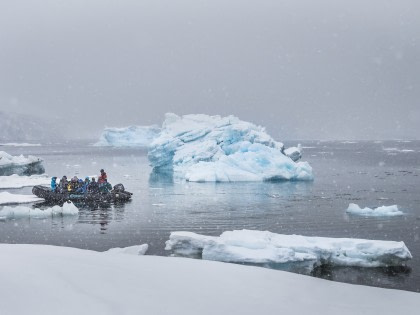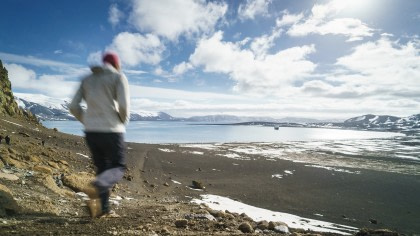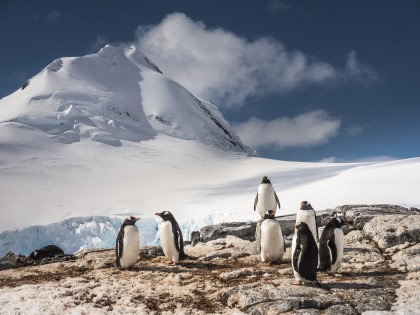Get to know your ice
Ice. It does everything from cooling your drink to helping to regulate the temperature of the entire planet. Let’s take a look at the ways we’ll encounter ice during an Arctic holiday or an Antarctica vacation and its wide variety of names.
There’s…
Ablation which is the loss of ice and/or snow from an area. This loss can occur because of evaporation, erosion, or melting.
Bergy bits are pieces of floating ice that have broken away from icebergs, ice shelves, or a glacier. They’re smaller than icebergs, measuring between 1 and 5 metres in height and have an area of between 100 to 300 metres squared.

Brash ice occurs when ice floes or pack ice has broken up into smaller floating chunks. There’s no official measurements like those found with bergy bits, but the general consensus is that pieces of brash ice are less than 3 metres thick and 2 metres in diameter.
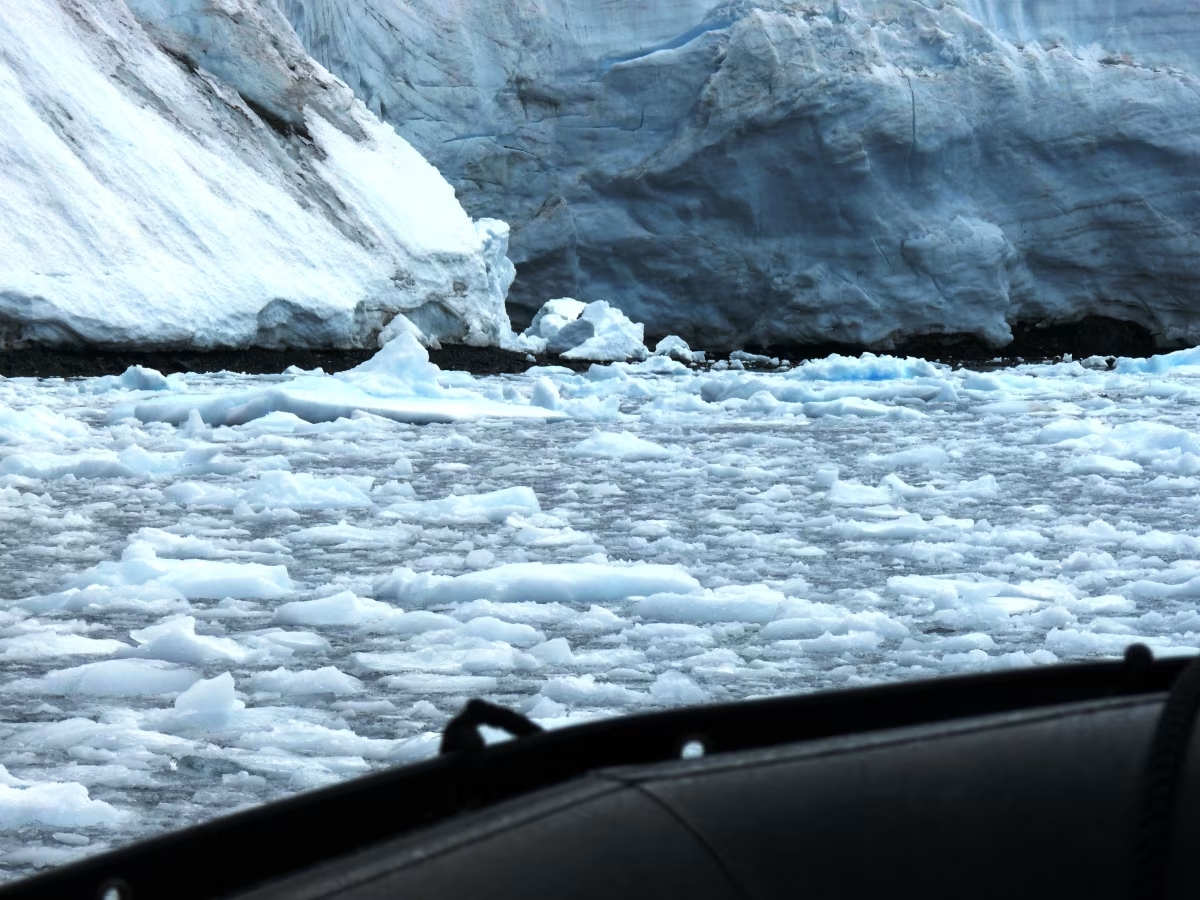
Calving is the act of chunks of ice breaking off of icebergs, ice shelves, or glaciers to form smaller ice bodies like bergy bits.
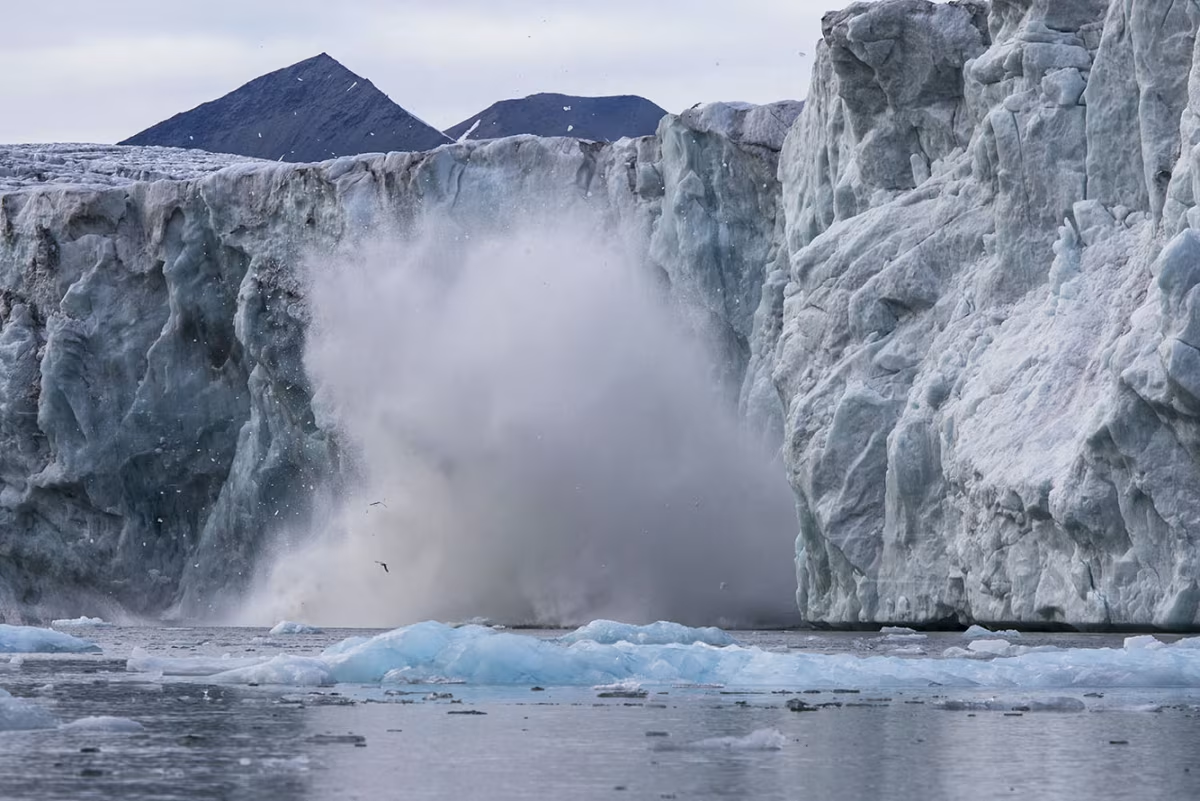
A crack is pretty much what you’d think – a slim cleavage in a piece of ice.
A crevasse on the other hand is a much larger split found in glaciers. A crevasse can be an indication that an iceberg is going to calve from a particular section of a glacier.
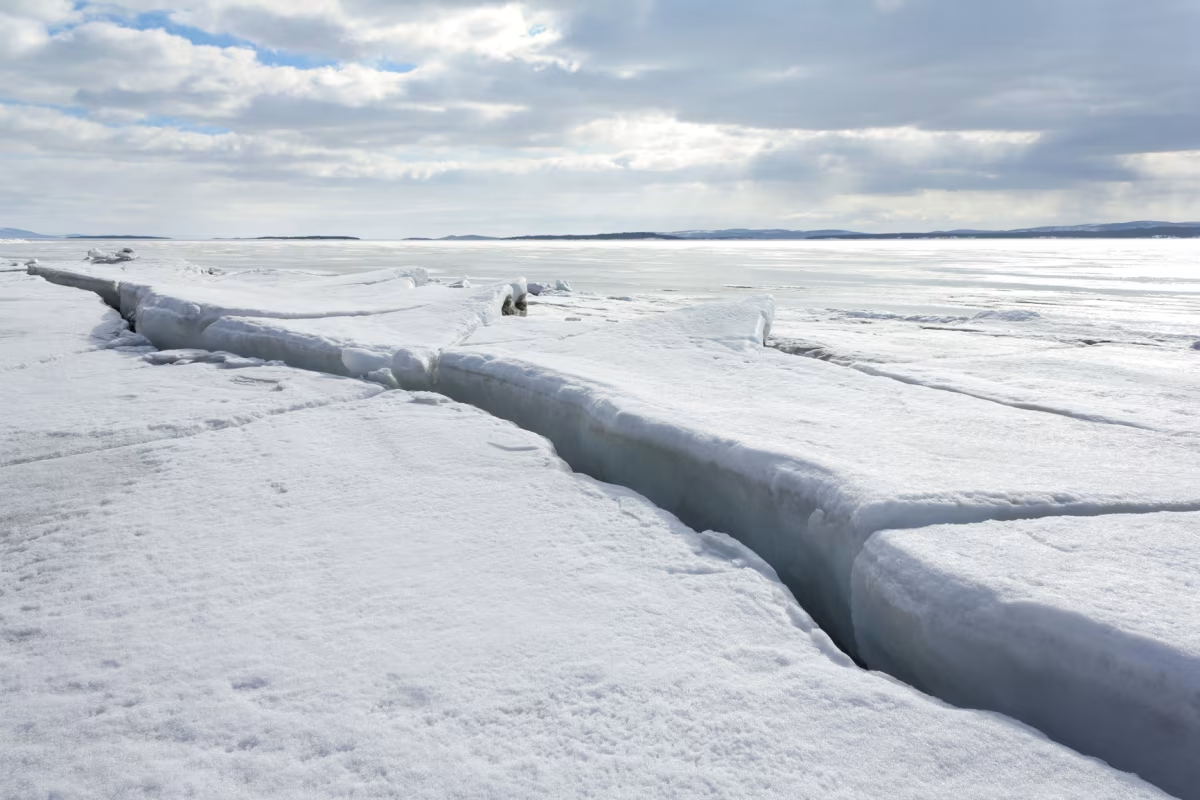
Fast ice refers to ice that has not broken free from land to go drifting away. This kind of ice is a solid body and can bear the weight of temporary housing stations, aircraft, and so on.
A floe occurs when pack ice breaks up and floats away. There are official size designations for floes:
- Small (less than 100 metres wide)
- Medium (less than 300 metres)
- Large (less than 2 kilometres)
- Vast (less than 10 kilometres)
- Giant (greater than 10 kilometres wide)
Frazil ice is what you get when ice first starts to form across an ocean’s waters. It looks like a bunch of ice needles have been thrown across the water, and taken as a whole it resembles slush. As frazil ice freezes it is referred to as grease ice because of its grease-like appearance on the water.
A glacier is a large body of ice found on land. They can kind of resemble rivers of ice and are in fact moving, be it ever so slowly, down the sides of mountains or across landscapes. One of the fastest-moving glaciers in the world is the Jakobshavn Glacier in the west end of Greenland which flows at around 20 metres a day.
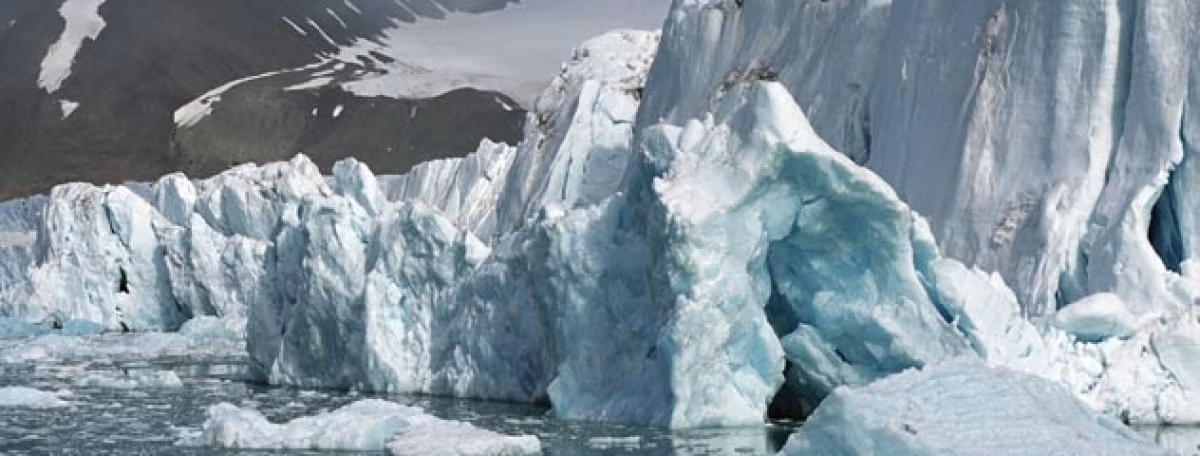
Glaciers can sometimes be further defined by their location or shape. For example there are continental glaciers which resemble domes and flow away from a central location or alpine (a.k.a. valley) glaciers which flow down valleys from their mountain perches.
Glacier tongues are glaciers that stick out into the water but their main bodies are attached to land.
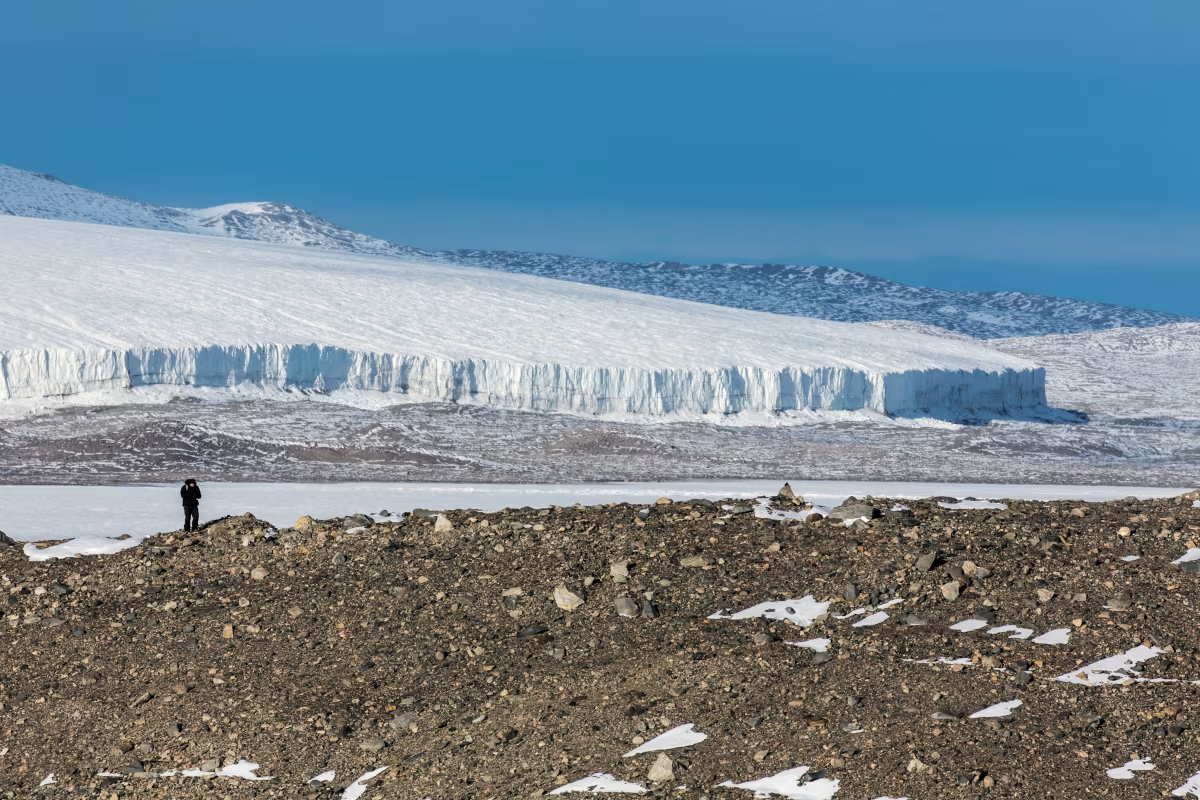
Grease ice – see frazil ice above.
Growlers are floating bodies of ice that are smaller than icebergs and bergy bits, with a height of less than 1 metre showing above the water and no more than 20 metres squared in area.
Hummocky ice is a small mound of ice that pops up out of a field of ice, caused by pressure squeezing the humps of ice upward out of the plane.
Icebergs are those floating beauties we see as they drift across the ocean. Unlike the sea water around them, ice bergs are made up of freshwater. Generally speaking we only see up to 20% of the iceberg’s entire mass above the water. To be an official iceberg the ice must rise a minimum of 5 metres above the water and have an area of at least 500 metres squared. Small icebergs weigh hundreds of tonnes and the biggest icebergs weigh even up to billions of tonnes. Icebergs can be very beautiful, but also very dangerous.
There are different types of icebergs:
- Dome icebergs have rounded tops.
- Pinnacled icebergs are the ones with the pointy tops.
- Sloping icebergs have angled but relatively flat tops.
- Tabular icebergs come with flat tops and steep flat sides (you’ll often see penguins congregate on this type of iceberg).
- Weathered icebergs are icebergs that have been sculpted by the weather into a fantastic variety of shapes.
Ice blinks are reflections of light bouncing off of a field of ice to the bottom of clouds above.
Ice caps are giant sheets of ice that cover up to a maximum of about 50,000 kilometres squared.
An ice edge is where the water meets the ice.
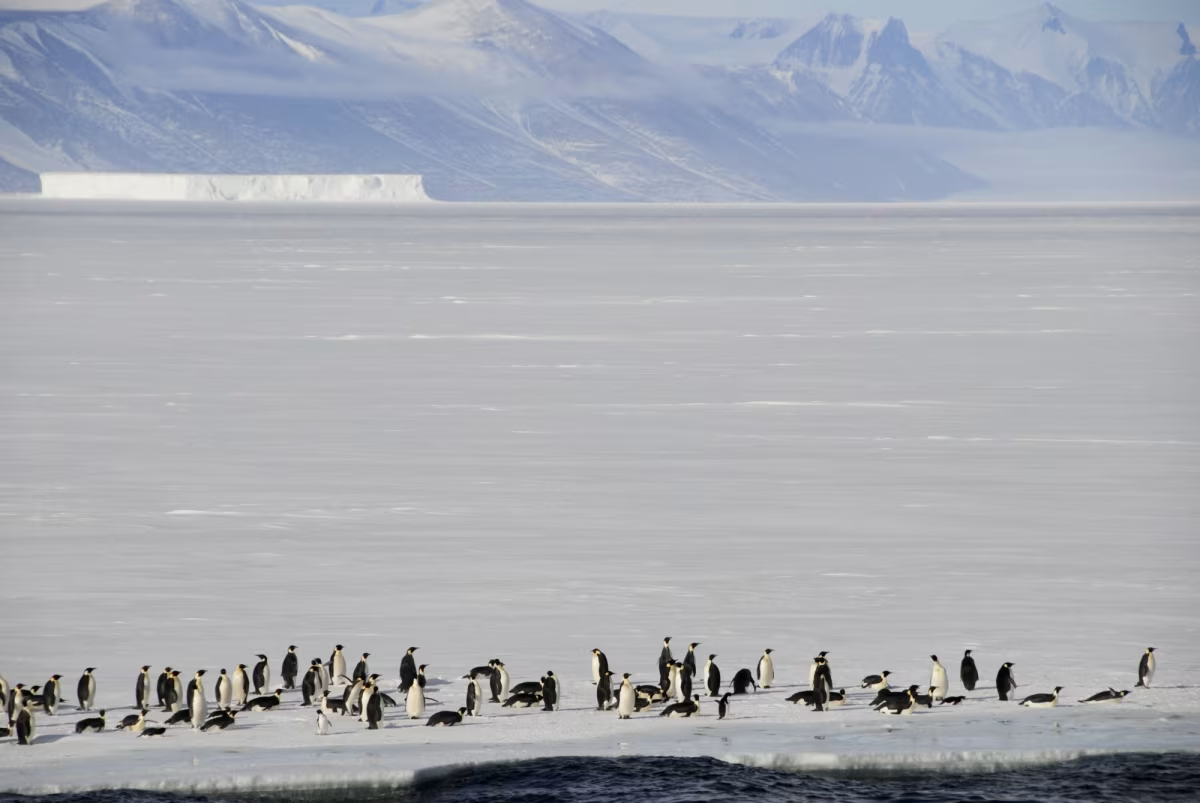
An ice front is a shelf of ice or a floating glacier that rises up to 50 metres above the water’s surface.
Ice shelves are sheets of ice that float on the water but are permanently attached to the land. They’re formed by ice sheets making their way down to the water. These shelves can be over a thousand kilometres in thickness, tower up to 50 kilometres above the water, and extend hundreds of kilometres in length along a coastline.
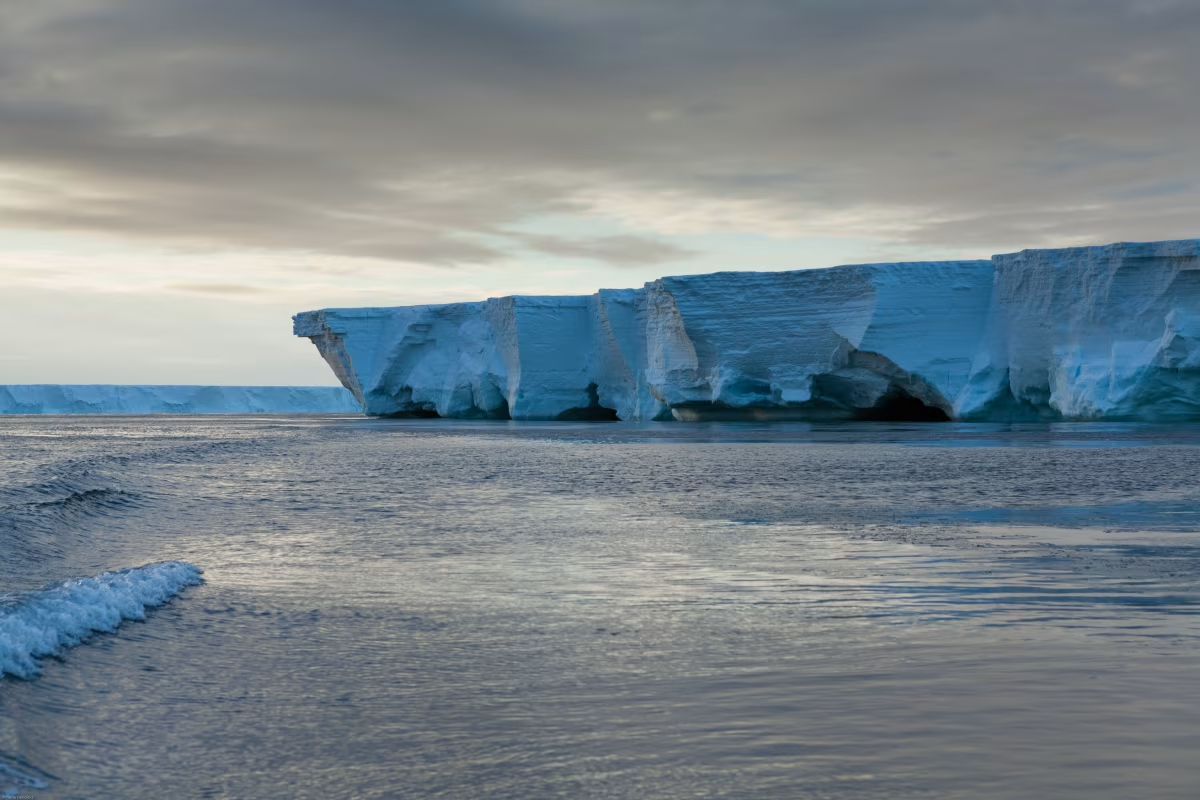
Ice tongues are sections of ice that stick out into the water but their main icy bodies are still attached to land.
Leads are openings in pack ice that ships can make their way through, hoping that the ice won’t close up on them before they reach the other side.
Moraines are the rocky detritus left behind after the passing of a glacier. A terminal moraine refers to the point where a glacier stopped advancing and started to retreat.
Nilas is the sludge that’s on its way to becoming solid ice. Nilas ice has a lot of salt water still in it and can still move with the waves of the ocean.
Nunatak refers to rocky formations like mountains that keep their heads up above glaciers.
Pack ice refers to chunks of ice that form an ongoing coverage of a section of water. “Open pack ice” means that the surface of the water is less than 60% ice in a given area; “close pack ice” means up to 80% ice, and “very close pack ice” means 90%. “Consolidated pack ice” means you can’t see any water and that your ship is going to be there for a while. You can also read our page about pack ice with more information.
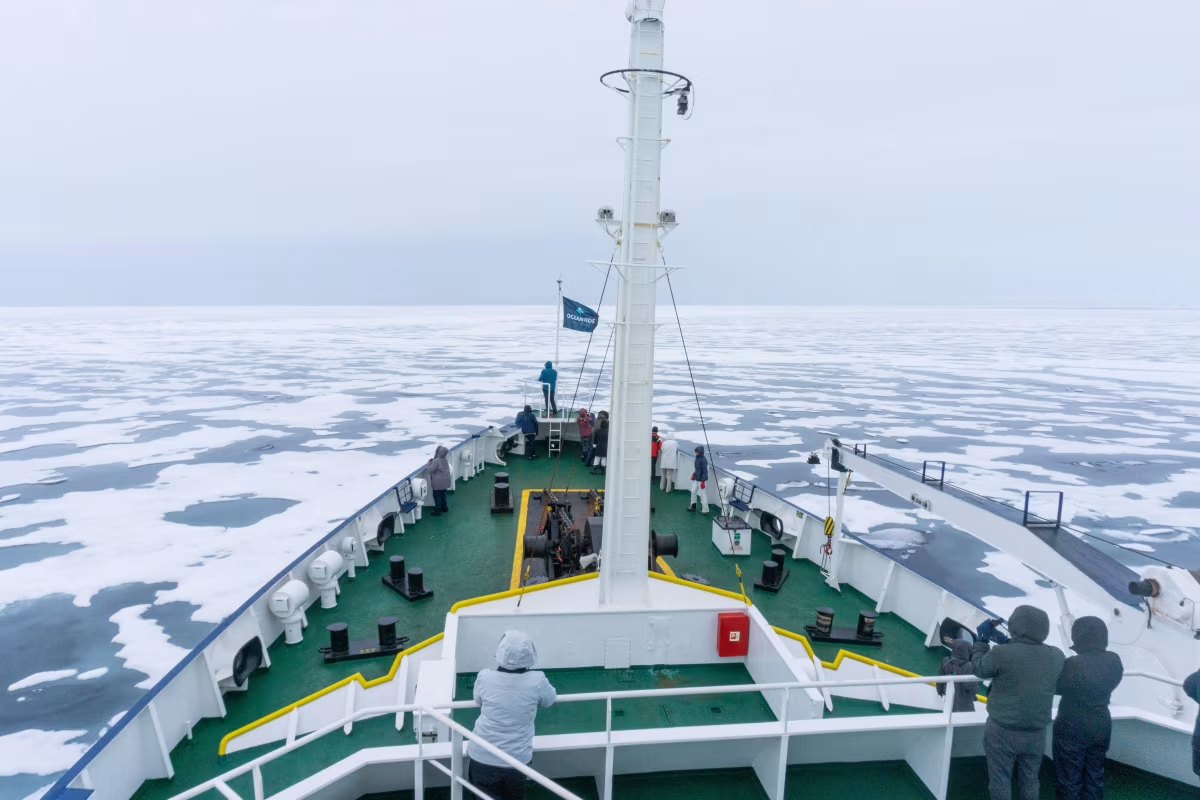
Pancake ice forms when the wind and the water push roundish bits of ice against each other, turning up the edges.
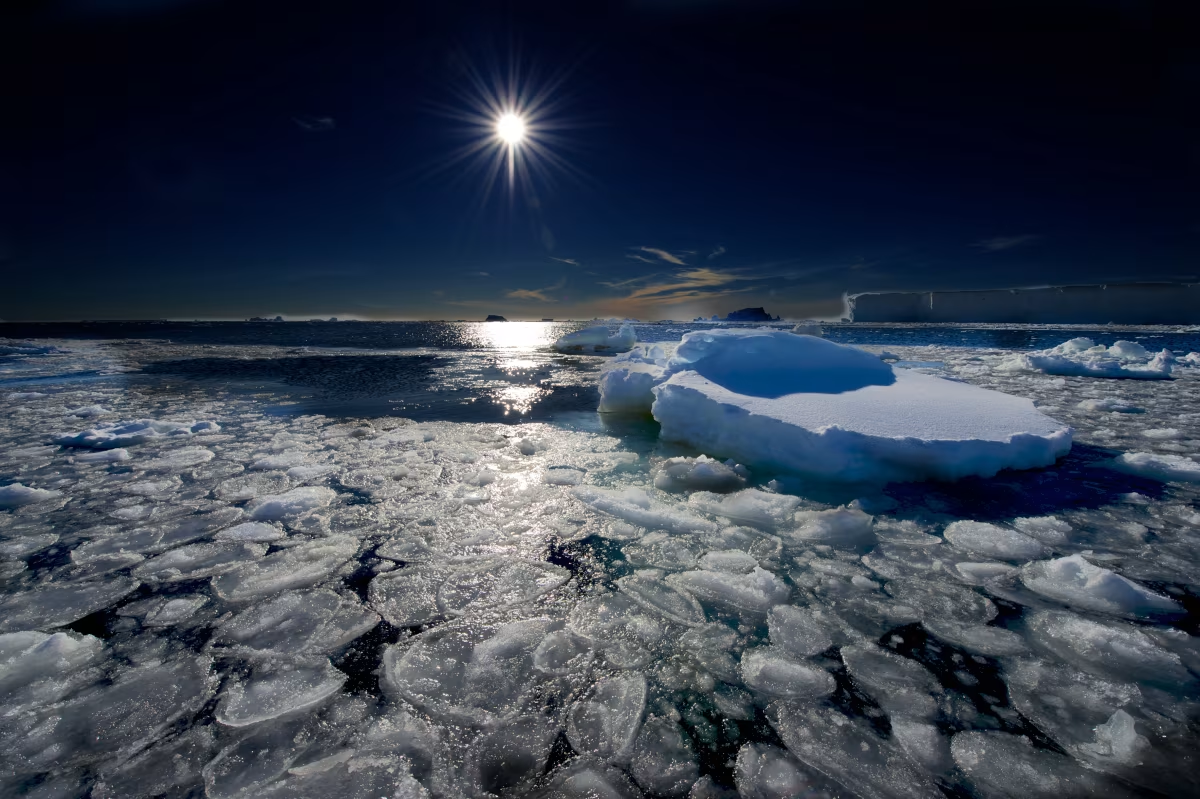
The wind and water also forms pressure ice which in turn forms pressure ridges that are pushed up out of the plane.
Rafting ice is ice that has climbed up on top of another body of ice like a turtle mounting another turtle.
Rotten ice is a body of ice that is melting or otherwise falling apart and looks somewhat like a honeycomb due to water or air getting between the ice particles.
Speaking of ridges, sastrugi are ridges that have been further shaped by the wind.
Sea ice is pretty much what you would expect, ice that forms on the sea and surrounds a body of land.

Shuga refers to the lumps of true ice that form out of grease ice.
Sludge or slush ice is the denser form of frazil ice that is well on its way to becoming true ice.
A glacier’s snout is its terminus, where the glacier runs out.
Stranded ice is ice that gets left behind when the water beneath it rolls out.
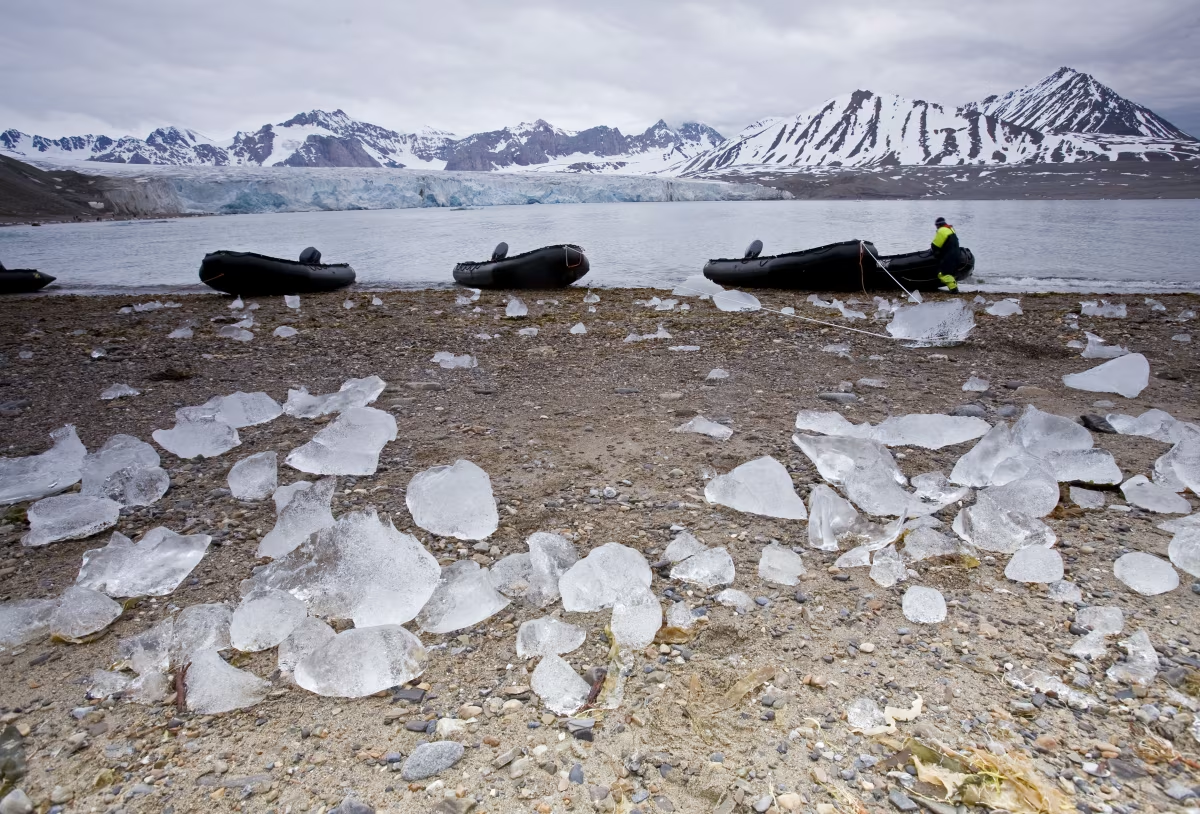
Water sky is related to ice blink in that it’s a reflection of onto low-lying clouds. In this case however the light is bouncing off of the darker-coloured water (as opposed to the whiter ice) and causes a dark area on the clouds.

